Axel lives in the middle of the fields. In a small house all dressed in wood. Built on a trailer. He lives in a Tiny House.
The Tiny House movement is a concept of life and architecture advocating minimalism and voluntary sobriety. The movement emerged in the United States in the 2000s and has continued to expand until really explodes in France over the past five years.
Co-inhabit the earth
A Tiny House is a small house generally of about 13m2 of floor space built on a trailer with a wooden frame and ecological materials. The main idea behind the concept is to completely rethink our way of living and inhabiting the world by eliminating superfluous needs and keeping only the bare essentials. Since the creation of the movement, Tinys have mainly been self-built habitats with a very strong desire to seek energy autonomy and have a lower impact on the ground. The ecological aspect and the search for well-being are the driving forces behind the design of the micro house, and the construction on a trailer responds to several important issues: the desire for a mobile home, the low cost of construction (compared to the colossal investment required today for conventional real estate) and the very low impact on the ground during construction (since Tinys applies the same principles as a house on stilts, thus not impacting the ground by below or very little).
Today the movement having gained momentum, more and more small businesses are starting to create and sell Tiny Houses. If the expansion of the concept allows the ideas conveyed to reach more and more people, we must be careful of the perverse effects that this could cause. A loss of the initial ideals (minimalism, ecology, autonomy, possible but limited movement, etc.) could occur. This is already the case with Ikea, which has been developing Tiny Houses for a few months now. We are far from the starting principles in search of frugality and simplicity.
The other problem concerns French legislation. Tiny Houses do not fit today in any box of the laws on housing, real estate and land and this can generate friction. Where to live ? On what ground? With or without taxes? The ideas conveyed by this way of life are new to the minds of the larger world and in complete opposition to today’s habitat and conventional construction. The increase in the number of Tinys on French territory for barely two years has caused turbulence among elected officials and the laws are in the process of changing. And not necessarily in a good way. This new way of inhabiting the earth scares the systems in place and fear often generates a hardening of measures.
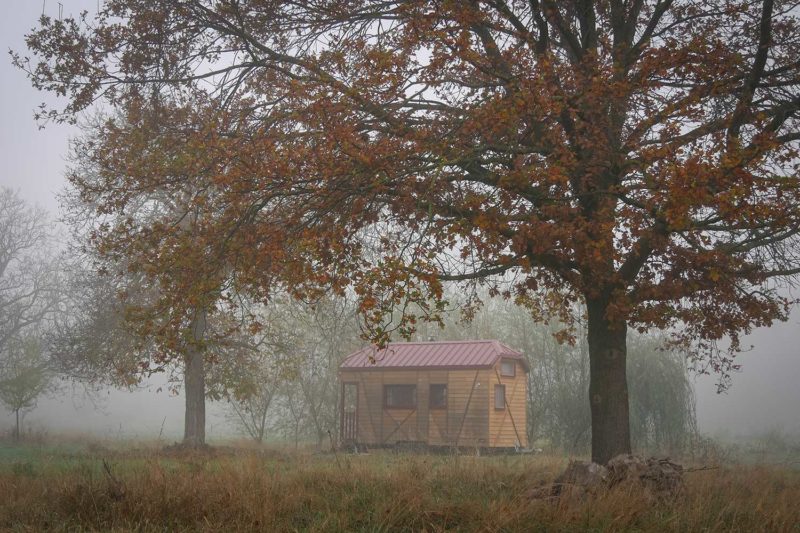
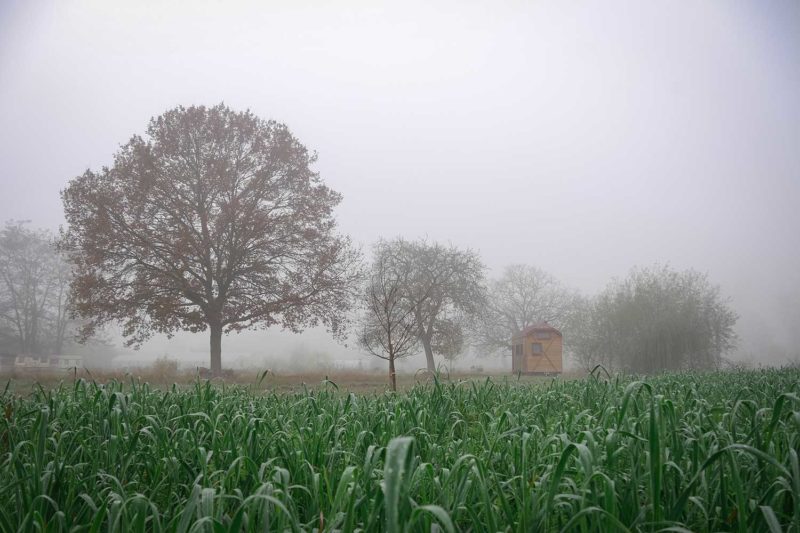
In the Alsatian fog, Axel’s Tiny House appears in the middle of the fields.
Changing the act of building
Living in a Tiny House following ecological and social convictions and not a fad is clearly a political act. A militant act. It is to decide today to act without waiting for the change of a government which will probably never come or too late. It is rethinking our relationship to the world, our relationship to habitat, our relationship to living things. It is understanding that it is more than necessary to re-learn to co-live between us humans, other living beings and the planet earth in a respectful way. The construction industry is one of the most polluting sectors in the world. Its impact on global warming, pollution, the fragmentation / destruction of natural habitats, the overexploitation of resources is maddening. It is more than necessary to do something.
I watch Axel’s Tiny House pink in the light of the setting sun. He has been living there for two years, in the fields of the organic market gardening farm where I am currently volunteering in Alsace. He showed me around from the inside. It was very simple, absolutely comfortable and very beautiful. And in total agreement with his ideas of decrease and soft transition. He did not build it himself but had it built by one of the main French builders of Tiny House. The bill was high (too high I think, around € 60,000) but the construction is perfect and the materials of very good quality. At the time he was about to buy an apartment. But the concept of the Tinys seduced him, more in line with his ideas of living with nature and sobriety. Axel does not have a car, he only uses bicycle and public transport to get around. He does not have internet in his Tiny or on his telephone and his fridge does not work. Little by little he tries to rethink his way of life and to change his habits.
The idea of living in a Tiny House is growing in my mind. I, who have been almost nomadic for five years and in a strong ecological transition, feel called by these light habitats. Whether in Tiny, yurts, kerterre or cabin, all respond to urgent current issues and offer a much more respectful way of living together in the world.
Watching Axel’s Tiny, I feel the decision I made a few days ago growing stronger in my mind. I decided to become professionally involved in the field of eco-construction. Build and renovate the habitat in an ecological and respectful way. Participate in the metamorphosis of the act of building. Campaign to change the way we live. Be the change I want to see in the world. Housing made of natural materials, sustainable housing, light housing, redesigned housing must be our future. I will fight for it.
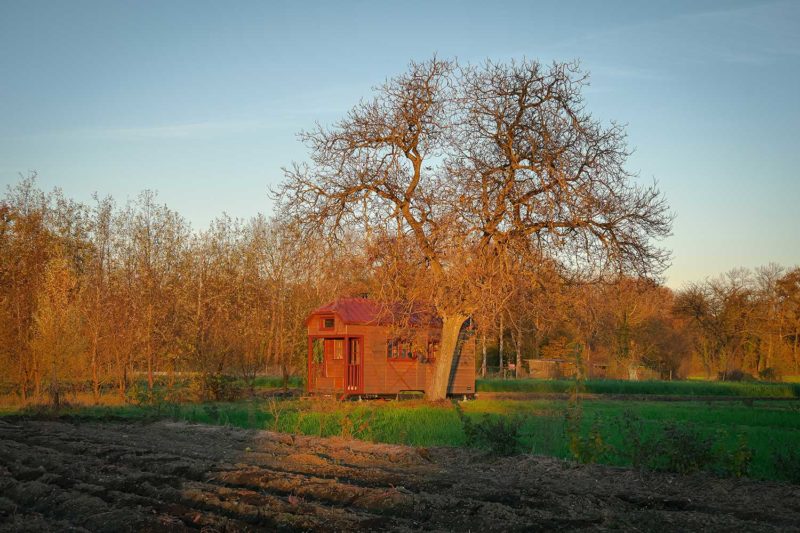
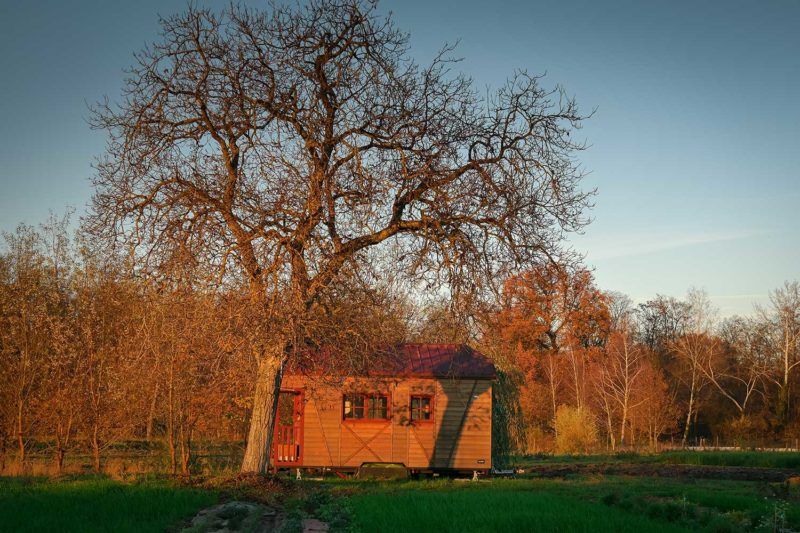
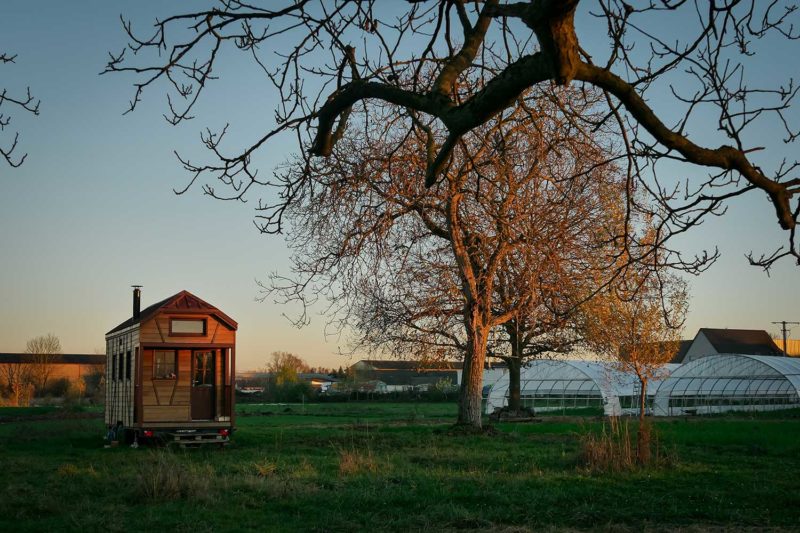

Different views of the Tiny at the end of the day.
Note: In order to respect the right to privacy and anonymity on the net, the names of people have been changed.
